Origins and Development of Hieroglyphics
Hieroglyphics, the writing system of ancient Egypt, holds a fascinating history that reflects the complexity and richness of Egyptian civilization. Originating around 3100 BCE, this intricate script was used primarily for religious and ceremonial purposes, illustrating both concrete objects and abstract concepts. Over centuries, hieroglyphics evolved from simple pictorial symbols to a sophisticated system that combined logograms, phonograms, and determinatives, showcasing the cultural and technological advancements of ancient Egypt. Its development not only facilitated communication across the empire but also left a lasting legacy that continues to captivate scholars and enthusiasts today.
Early Symbols and Pictograms
The origins of hieroglyphics can be traced back to ancient Egypt around 3300 BCE, where early forms of writing emerged to facilitate communication and record-keeping. These early symbols and pictograms served as a visual language, depicting objects, ideas, and sounds through simplified images. Initially, they were used primarily for religious texts, inscriptions on monuments, and tomb paintings, reflecting their sacred significance. Over time, these symbols evolved from simple pictures into more complex systems, combining phonetic and ideographic elements to convey a wide range of meanings. The development of hieroglyphics marked a significant milestone in the cultural and administrative history of Egypt, enabling rulers and priests to preserve their rituals, history, and knowledge in a durable and visually expressive script that remained in use for over three millennia.
Evolution into Formal Script
Hieroglyphics originated in ancient Egypt around 3100 BCE, evolving as a complex system of pictorial symbols used primarily for religious and ceremonial purposes. This script combined logographic and alphabetic elements, enabling scribes to convey a wide range of meanings and ideas effectively. Over centuries, hieroglyphics became deeply integrated into Egyptian culture, adorning temples, tombs, and monuments to communicate religious beliefs, history, and royal decrees.
As Egyptian civilization advanced, the need for more efficient writing methods led to the development of cursive scripts used for everyday administration and record-keeping. These simplified forms, such as hieratic and later demotic scripts, gradually evolved from the formal hieroglyphic system. During the later periods of Egyptian history, especially under Greek and Roman influence, the script further transformed, blending with other writing traditions. Eventually, hieroglyphics transitioned into a more formal script used primarily for monumental inscriptions, while more cursive and streamlined scripts facilitated daily communication and record-keeping, marking the evolution of hieroglyphics into a sophisticated and highly developed writing system that reflected Egypt’s rich cultural and religious landscape.
Influence of Religious and Royal Life
Hieroglyphics, the intricate system of writing used by ancient Egyptians, originated around 3300 BCE as a combination of logographic and alphabetic symbols. This writing system was primarily developed to serve the administrative needs of a centralized state, enabling the recording of laws, transactions, and historical events. Over time, hieroglyphics became highly refined, incorporating a vast array of symbols that conveyed both sounds and meanings, making it suitable for religious texts, monumental inscriptions, and royal decrees.
The development of hieroglyphics was heavily influenced by the religious and royal spheres of ancient Egyptian society. As religion played a central role in daily life, many hieroglyphic symbols held sacred significance, representing gods, divine concepts, and spiritual beliefs. These symbols were used extensively in temple inscriptions and in the decoration of tombs, emphasizing the divine nature of the pharaohs and their connection to the gods. Similarly, royal life drove the evolution of a sophisticated writing system to document royal achievements, justify divine rulership, and ensure the proper care of the afterlife, reflected in elaborate hieroglyphic texts carved on monuments and in tombs. This intertwining of religion and monarchy fostered the development of hieroglyphics as both a sacred and a royal language, solidifying its role in preserving the cultural and spiritual identity of ancient Egypt.
Structure and Components of Hieroglyphic Writing
The structure and components of hieroglyphic writing are fundamental to understanding ancient Egyptian communication systems. Hieroglyphics combine pictorial symbols, which represent objects, ideas, sounds, or groups of sounds, to create a complex and visually rich script. This writing system includes a variety of signs such as determinatives, ideograms, and phonograms, each serving specific functions. Together, these components form an intricate script that was used for religious texts, official inscriptions, and monumental architecture, reflecting the sophistication of ancient Egyptian culture.
Phonograms and Ideograms
Hieroglyphic writing, developed by ancient Egyptians, is a complex system composed of various symbols used for recording their language and culture. Its structure includes a combination of phonograms and ideograms, which work together to convey meaning and sound.
Phonograms are symbols that represent specific sounds or combinations of sounds, functioning similarly to our alphabet or syllabary. They allowed scribes to spell out words phonetically, facilitating the writing of foreign names, new terms, or abstract concepts.
Ideograms, on the other hand, are symbols that directly depict the objects, ideas, or actions they represent, providing a visual cue to the meaning without necessarily indicating pronunciation. These symbols often served as core elements of the writing system, conveying the primary message quickly and clearly.
Hieroglyphic writing typically integrated these components within a single inscription, using a mix of phonograms to spell out words and ideograms to symbolize overarching concepts. This combination enabled the ancient Egyptians to produce richly detailed and meaningful texts that have fascinated scholars for centuries.
Determinatives and Their Functions
Hieroglyphic writing, the formal script of ancient Egypt, is composed of a complex system of pictorial symbols that represent sounds, words, and ideas. Its structure is primarily based on a combination of phonetic elements, ideograms, and determinatives, which together convey detailed and precise information in inscriptions on monuments, tombs, and papyrus scrolls. The writing system is characterized by its aesthetic and symbolic richness, designed not only for communication but also for religious and ceremonial purposes.
Determinatives are a key component of hieroglyphic writing, functioning as clarifying symbols that categorize words into specific semantic groups. These symbols are typically placed at the end of a word to indicate its general meaning or class, such as animals, humans, tools, or abstract concepts. For example, a determinative of a man or god might be used at the end of words related to deities or human figures, providing contextual cues that assist in interpreting the rest of the sign sequence. Their primary function is to reduce ambiguity and aid in the comprehension of hieroglyphic texts, especially since many symbols can have multiple phonetic or ideographic values.
Overall, the structure of hieroglyphic writing with its use of phonetic signs, ideograms, and determinatives created a sophisticated, multi-layered system that served not only linguistic but also religious and cultural purposes in ancient Egypt. Determinatives played a vital role by anchoring the meaning of words and helping readers decipher the intent behind the symbols, ensuring the preservation and transmission of Egypt’s rich cultural heritage.
Categories of Hieroglyphs: Nature, Objects, and Abstract Concepts
Hieroglyphic writing, used extensively in ancient Egypt, is a complex system combining visual symbols to represent language. It features a variety of components that include detailed images and symbols, which serve different functions within the script. These components work together to convey words, sounds, and ideas, forming a sophisticated system of written communication.
The structure of hieroglyphic writing is composed of three main categories of symbols: phonograms, ideograms, and determinatives. Phonograms represent individual sounds or groups of sounds, functioning much like letters or syllables. Ideograms are symbols that depict specific objects or concepts directly, emphasizing meaning. Determinatives are signs placed at the end of words to clarify the category or nature of the term, such as indicating proper nouns, locations, or abstract concepts, without being pronounced themselves.
Hieroglyphs can be categorized into three primary groups based on their themes: symbols related to nature, objects, and abstract concepts. Nature hieroglyphs include images of animals, plants, and natural phenomena used to symbolize qualities or sounds—such as a lion for strength or a reed for the sound “i.” Object hieroglyphs depict tangible items like tools, furniture, or possessions, often used to represent words or ideas directly associated with those objects. Abstract concept hieroglyphs encompass symbols representing ideas such as truth, justice, or eternity, often conveyed through more stylized or symbolic forms, helping to express ideas that are intangible or philosophical in nature.
Materials and Tools Used for Hieroglyphic Inscription
In ancient Egypt, the creation of hieroglyphic inscriptions required a variety of specialized materials and tools that enabled scribes and craftsmen to produce enduring and intricate carvings. These materials and tools played a crucial role in preserving the cultural and religious significance of hieroglyphics, which were carefully inscribed on monuments, temples, and tombs. Understanding the essential materials and tools offers insight into the skill and sophistication of ancient Egyptian artisans and their ability to translate complex symbols into lasting artworks.
Stone Carving Techniques
In ancient Egypt, the creation of hieroglyphic inscriptions and stone carvings required a variety of specialized materials and tools to ensure precision and durability. Artisans employed a combination of natural and manufactured resources to produce these enduring works of art and writing.
Materials used for hieroglyphic inscriptions and stone carving techniques include:
- Granite, limestone, sandstone, and basalt – primary stones for carving hieroglyphs
- White and red ochre pigments – used for painting hieroglyphs and decorating surfaces
- Gold leaf – occasionally applied for decorative purposes in inscriptions
Tools instrumental in the carving process encompassed:
- Chisels made from copper, bronze, or later iron – used to carve into stone surfaces
- Hammerstones and mallets – to strike chisels and shape the stone
- Abrading tools such as sandstone, quartzite, or diorite – for smoothing and finishing surfaces
- Brushes and pens with reed or ink – for applying pigments and detailed coloring
- Polishing stones – to achieve a refined surface finish after carving
These materials and tools, combined with skilled craftsmanship, enabled ancient Egyptian artisans to produce intricate hieroglyphic inscriptions that have endured for millennia, offering invaluable insights into their civilization.
Use of Papyrus and Ink
In ancient Egypt, materials and tools used for hieroglyphic inscription were carefully selected to ensure durability and clarity. Papyrus served as the primary medium for writing, crafted from the pith of the papyrus plant, which was processed into thin strips and pressed together to create a smooth, writable surface. The Egyptians believed that papyrus was an ideal material for recording religious texts, official records, and funerary inscriptions. Ink used for hieroglyphics was typically made from natural ingredients such as soot or charcoal mixed with water or a plant-based gum to create a dark, lasting pigment. Additionally, mineral pigments like red ochre and yellow ochre were sometimes used for colored inscriptions, offering vibrancy and emphasis. The tools employed included reed brushes and pens, which allowed scribes to produce fine lines and detailed carvings. These materials and tools combined to produce hieroglyphic inscriptions that were both aesthetically remarkable and enduring, serving as vital records of Egypt’s rich history and culture.
Tools and Instruments of Scribes
In ancient Egypt, the creation of hieroglyphic inscriptions required a variety of specialized materials and tools. Scribes and artisans primarily used stone or wood surfaces as their canvases, with limestone and sandstone being common choices due to their abundance and ease of carving. For writing, they employed brushes made from reeds or rushes, which were dipped into natural inks crafted from soot, charcoal, or ochre mixed with water or animal fat to produce black or colored pigments. In addition to ink, they sometimes used chisels and hammers when inscribing on stone monuments to etch the hieroglyphs more permanently.
The tools and instruments of scribes were meticulously designed for precision and durability. Copper or bronze chisels and pointed tools were frequently used for carving stone, allowing detailed and intricate hieroglyphic designs. Reed pens were especially important for inscribing on papyrus scrolls or wooden surfaces, providing control and fluidity in writing. Artists and scribes also relied on rulers and straight edges to ensure alignment and proportion of the symbols. The combination of these materials and tools enabled the detailed and enduring inscriptions that have preserved ancient Egyptian culture and beliefs for thousands of years.
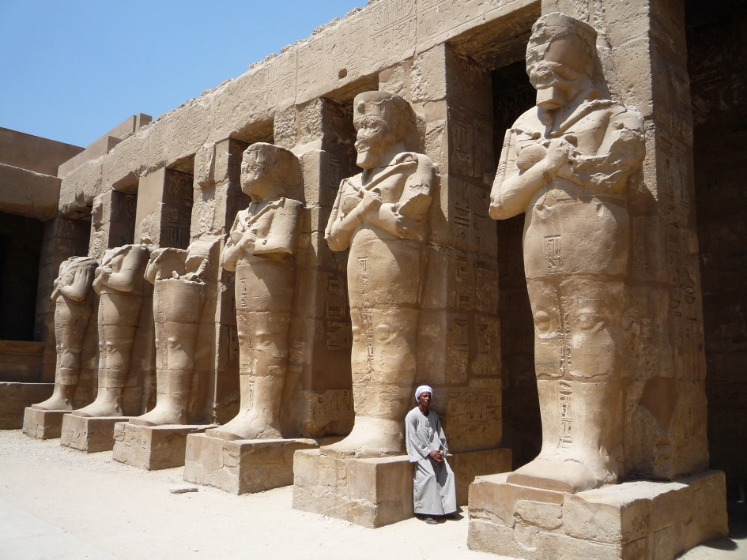
Decipherment and Significance of Hieroglyphics
Hieroglyphics, the intricate system of pictorial symbols used by ancient Egyptians, holds a vital place in the study of Egyptology. Deciphering these ancient scripts unlocked the secrets of Egypt’s rich history, culture, and religious beliefs. The significance of hieroglyphics extends beyond language; they serve as a window into the civilization’s artistry, societal structure, and spiritual life, making them an enduring symbol of Egypt’s timeless legacy.
Rosetta Stone and Its Impact
Hieroglyphics were the writing system used by ancient Egyptians, composed of intricate symbols representing sounds, words, or ideas. Their decipherment opened a window into Egypt’s rich history, religion, and culture, which had remained largely inaccessible for centuries. The significance of understanding hieroglyphics lies in the ability to read ancient texts, inscriptions, and monuments, revealing insights into Egyptian civilization, governance, and beliefs.
The Rosetta Stone played a pivotal role in this breakthrough. Discovered in 1799, it is a granodiorite stele inscribed with the same text in three scripts: Greek, Demotic, and hieroglyphic. Since scholars could understand ancient Greek, this artifact became the key to translating hieroglyphics. The work of Jean-François Champollion in the 1820s, who used the Rosetta Stone to decipher the symbols, marked a turning point in Egyptology and linguistic studies.
The impact of deciphering hieroglyphics extended beyond mere language translation. It enabled historians and archaeologists to accurately interpret ancient Egyptian history, religious practices, and societal structure. As a result, the knowledge gleaned from hieroglyphics enriched our understanding of ancient Egyptian civilization and its influence on subsequent cultures and historical development.
- Revolutionized the study of ancient Egypt by breaking the language barrier
- Provided detailed historical records through inscriptions and tomb inscriptions
- Enhanced understanding of Egyptian religion, mythology, and daily life
- Contributed to the development of modern linguistics and semiotics
- Fostered broader appreciation and preservation of Egyptian cultural heritage
Decipherment by Jean-François Champollion
Decipherment and the significance of hieroglyphics play a crucial role in understanding ancient Egypt’s rich history and culture. Hieroglyphics, the writing system used by the ancient Egyptians, consist of intricate symbols that represented sounds, words, and ideas, serving as a form of religious and ceremonial communication engraved on monuments, tombs, and papyrus.
The breakthrough in deciphering hieroglyphics was achieved by Jean-François Champollion in the early 19th century. Building upon the earlier work of scholars like Thomas Young, Champollion’s knowledge of Coptic and Greek enabled him to identify the phonetic values within hieroglyphic inscriptions. His key insight was recognizing the cartouches—oval shapes surrounding royal names—as containing phonetic spellings, allowing him to connect hieroglyphic symbols with known words and sounds.
Champollion’s decipherment marked a turning point in Egyptology, opening access to the vast records of Egyptian civilization that had remained indecipherable for centuries. It enabled historians and archaeologists to read inscriptions on temples, tombs, and papyri, revealing insights into Egyptian history, religion, governance, and daily life. Overall, the decipherment of hieroglyphics profoundly deepened our understanding of ancient Egypt and highlighted the significance of linguistic breakthroughs in unlocking the secrets of the past.
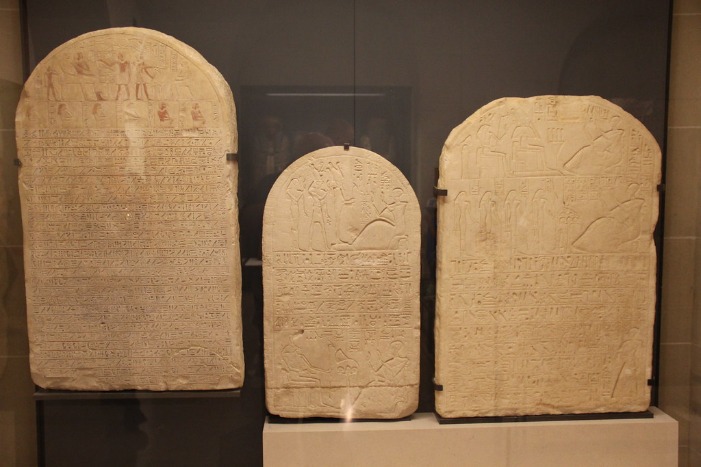
Role in Understanding Ancient Egyptian Culture and History
Hieroglyphics, the intricate system of writing used by ancient Egyptians, played a crucial role in capturing and transmitting the culture, religion, and history of one of the world’s most fascinating civilizations. Deciphering this script, especially following the discovery of the Rosetta Stone, unlocked the linguistic barriers that had long obscured Egypt’s past, enabling scholars to understand texts inscribed in temples, tombs, and papyri.
The decipherment of hieroglyphics transformed our knowledge of ancient Egypt by revealing details about their beliefs, societal structure, daily life, and monumental achievements. It provided valuable insights into their mythology, rituals, and governance, fostering a deeper appreciation of their sophisticated culture. Hieroglyphics also served as a tool for preserving history, allowing subsequent generations to learn from inscriptions depicting significant events and royal achievements.
Furthermore, the ability to read hieroglyphics galvanized archaeological discoveries, helping historians and archaeologists piece together the timeline of Egyptian history. It brought to light the stories behind the monumental architecture, art, and artifacts, emphasizing the civilization’s contributions to human history. Overall, the decipherment of hieroglyphics was instrumental in shaping our modern understanding of ancient Egypt’s rich and enduring legacy.
Hieroglyphics in Art and Architecture
Hieroglyphics, the intricate system of writing used by ancient Egyptians, played a significant role in their art and architecture. These symbols, often carved or painted onto monuments, tombs, and temples, conveyed religious beliefs, historical events, and royal power. Integrating hieroglyphics into artistic designs not only enhanced the visual appeal of Egyptian structures but also served as a means of storytelling and spiritual symbolism. This unique fusion of language and art reflects the deep cultural and spiritual consciousness of ancient Egypt.
Reliefs and Wall Inscriptions
Hieroglyphics played a fundamental role in the art and architecture of ancient Egypt, serving both decorative and communicative purposes. These intricate symbols were carefully carved or painted onto walls, monuments, and objects, transforming them into visual stories that conveyed religious beliefs, historical events, and royal titles. In architecture, hieroglyphic inscriptions often adorned temple walls and tombs, creating a sacred narrative space that reinforced the divine nature of the pharaohs and deities. Reliefs depicting hieroglyphics provided a three-dimensional aspect to the artwork, allowing artists to integrate language seamlessly with imagery. Wall inscriptions in tombs and temples not only documented achievements and offerings but also functioned as magical texts, intended to ensure safe passage to the afterlife or invoke divine favor. Overall, hieroglyphics in ancient Egyptian art and architecture exemplify the profound connection between language, spirituality, and visual expression in their culture.
Monuments and Temples
Hieroglyphics played a crucial role in ancient Egyptian art and architecture, serving as both a formal writing system and a decorative element in temples and monuments. These intricate symbols were often inscribed on walls, columns, and tombs, conveying religious texts, royal decrees, and historical narratives. In architecture, hieroglyphics enhanced the visual impact of structures, blending functionality with artistry to honor gods and pharaohs. Monuments such as obelisks, tombs, and pyramids are adorned with hieroglyphic inscriptions that tell stories of divine power and eternal life. Temples like those at Karnak and Luxor feature extensive hieroglyphic carvings, illustrating mythological scenes and cultural beliefs, thus creating a visual language that integrated spiritual significance with artistic expression. These inscriptions not only documented history but also reinforced the divine authority of the ruling class, making hieroglyphics an essential element of Egypt’s monumental legacy.
Decorative and Ritual Uses
Hieroglyphics, the intricate and symbolic writing system of ancient Egypt, played a vital role in art and architecture, serving both decorative and ritual purposes. These elaborate symbols adorned temples, tombs, and monuments, transforming walls into visual narratives that conveyed spiritual beliefs and historical events. In art, hieroglyphics were integrated seamlessly with images of gods, pharaohs, and daily life, enhancing the aesthetic appeal while reinforcing religious and cultural messages. They often appeared in the form of cartouches, which enclosed the names of royalty, emphasizing divine authority. In architecture, hieroglyphic inscriptions facilitated the communication of sacred texts and incantations designed to protect and honor the deceased, ensuring their journey into the afterlife. These inscriptions were meticulously carved or painted, serving both as decorative elements and as vital components of ritual practices to invoke divine favor and eternal life, showcasing the deep interconnection between language, art, and spiritual belief in ancient Egyptian culture.
Legacy and Modern Study of Hieroglyphics
The study of hieroglyphics, the intricate writing system of ancient Egypt, has evolved significantly over time, reflecting both archaeological discoveries and advances in linguistic analysis. From early decipherment efforts to contemporary digital technologies, the legacy of hieroglyphic study offers a fascinating glimpse into ancient Egyptian culture and history. Modern research continues to deepen our understanding, bridging the gap between the ancient and modern worlds through innovative methods and scholarly collaboration.
Egyptology and Archaeological Discoveries
The study of ancient Egypt and its hieroglyphic writing system has evolved significantly from early antiquarian interests to modern Egyptology, blending linguistic, archaeological, and technological approaches. Originally, hieroglyphics were deciphered in the 19th century through the breakthrough of the Rosetta Stone, which provided the key to understanding these complex symbols. This discovery sparked widespread scholarly interest and laid the foundation for modern archaeological practices.
Modern Egyptology employs advanced technologies such as digital imaging, 3D reconstruction, and machine learning to analyze hieroglyphic inscriptions with unprecedented precision. These tools have uncovered previously unreadable texts, providing deeper insights into Egyptian history, religion, and societal organization. Archaeological excavations continue to yield remarkable discoveries, including preserved tombs, temples, and artifacts that shed light on the civilization’s cultural and political life.
Through a combination of classical scholarship and cutting-edge research methods, the study of hieroglyphics and ancient Egyptian history remains a dynamic field. These efforts have illuminated the rich legacy of Egypt’s past, enhancing our understanding of one of the world’s most influential ancient civilizations and ensuring its stories continue to be explored for generations to come.
Applications in Contemporary Media and Education
The study of hieroglyphics has evolved significantly from ancient Egypt to the modern era, blending traditional scholarship with innovative digital methods. Historically, hieroglyphics were deciphered through the discovery of the Rosetta Stone, which provided a crucial key to understanding this complex writing system. Contemporary research leverages advanced technologies such as digital imaging, 3D modeling, and AI algorithms to analyze and interpret hieroglyphic inscriptions more efficiently. Despite these modern tools, the foundational methods of ancient scholars continue to influence current studies, fostering a deeper understanding of Egypt’s history and culture.
In contemporary media, hieroglyphics are often employed for their aesthetic and symbolic qualities, appearing in movies, video games, and artwork to evoke an authentic connection to ancient Egypt. They serve as visual elements that add mystique and historical depth to modern storytelling and design. Additionally, educational initiatives utilize hieroglyphics to engage students with Egyptology, offering interactive digital platforms, museum exhibits, and online courses that teach the script’s history and meaning. These applications not only promote cultural awareness but also demonstrate the ongoing relevance of hieroglyphics as a bridge between the ancient and modern worlds.
Preservation and Challenges in Hieroglyphic Research
The study of hieroglyphics in ancient Egypt has evolved significantly from early decipherments to modern techniques, reflecting a rich legacy of archaeological and linguistic research. Historically, scholars focused on recognizing symbols and translating them, but recent advancements have incorporated digital technology, 3D imaging, and computational linguistics to deepen understanding of this complex writing system. Preservation efforts aim to safeguard hieroglyphic inscriptions on monuments, temples, and artifacts, ensuring their survival against environmental degradation and human activity.
Modern research emphasizes the importance of interdisciplinary approaches, involving archaeology, linguistics, and digital imaging, to decode and interpret hieroglyphic texts more accurately. Preservation challenges include the deterioration of stone surfaces, graffiti damage, and climate effects, which threaten the integrity of ancient inscriptions. Efforts to conserve hieroglyphic sites often involve cleaning, structural stabilizations, and digital documentation for future analysis.
Continuing challenges in hieroglyphic research involve deciphering incomplete texts, understanding the contextual significance of symbols, and maintaining the physical sites against ongoing environmental and human impacts. Despite these hurdles, ongoing innovations and international collaboration contribute to a deeper appreciation of Egypt’s sacred and cultural heritage, ensuring that hieroglyphic writings remain a vital link to its ancient civilization.

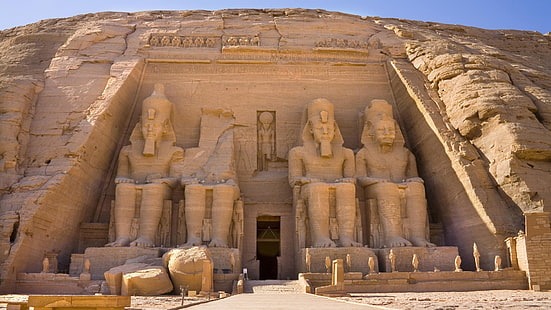
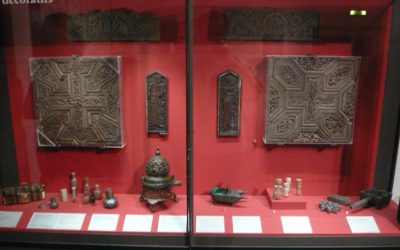
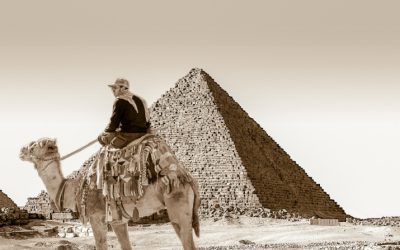

0 Comments